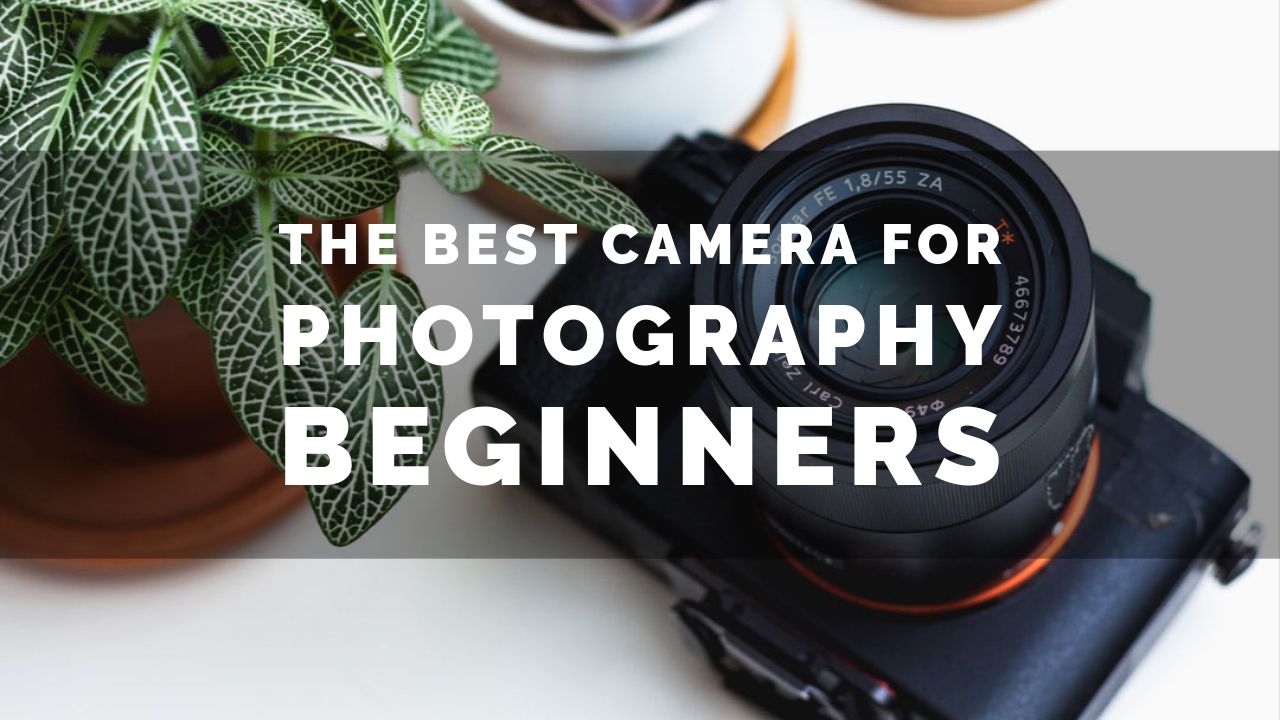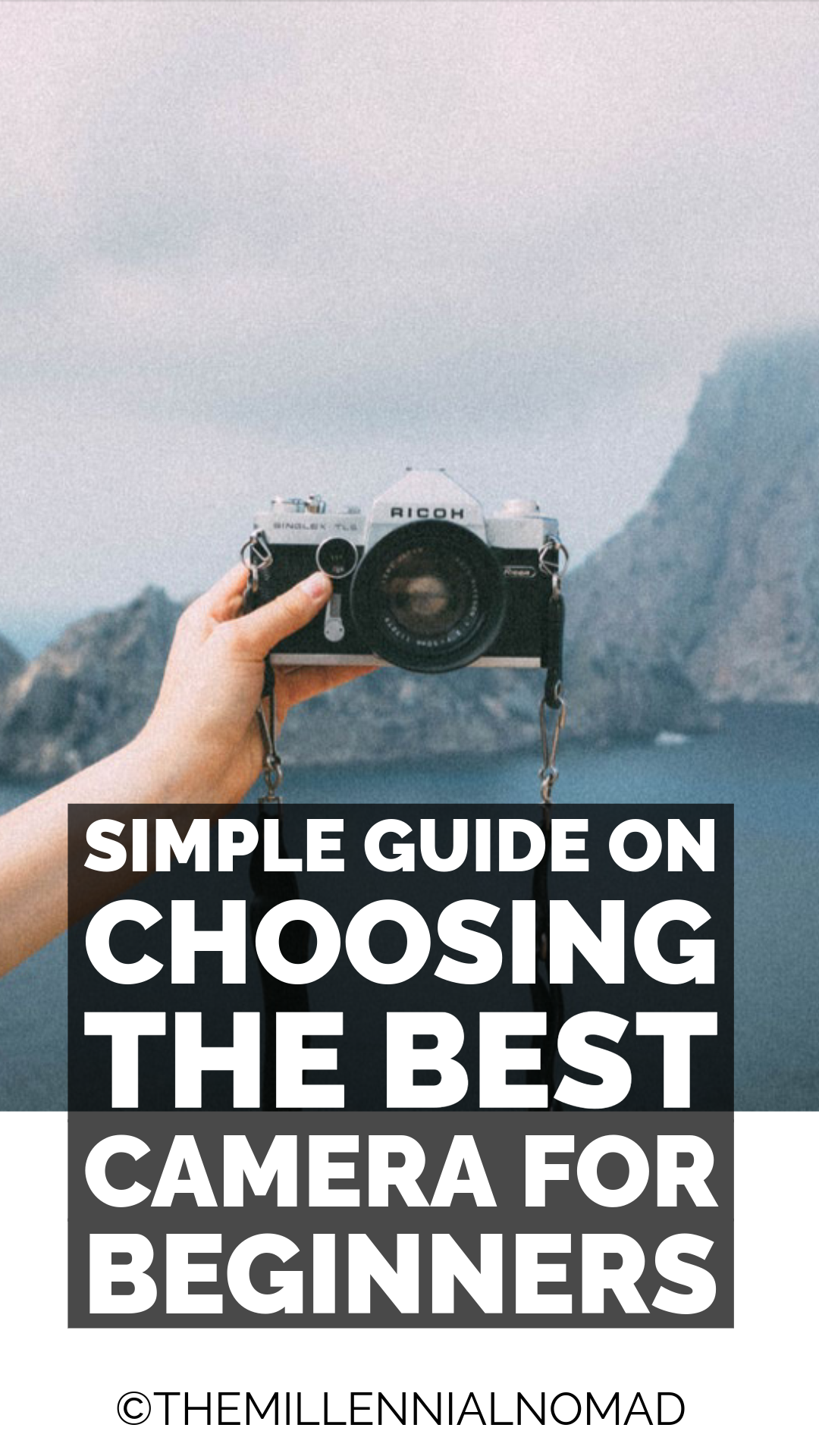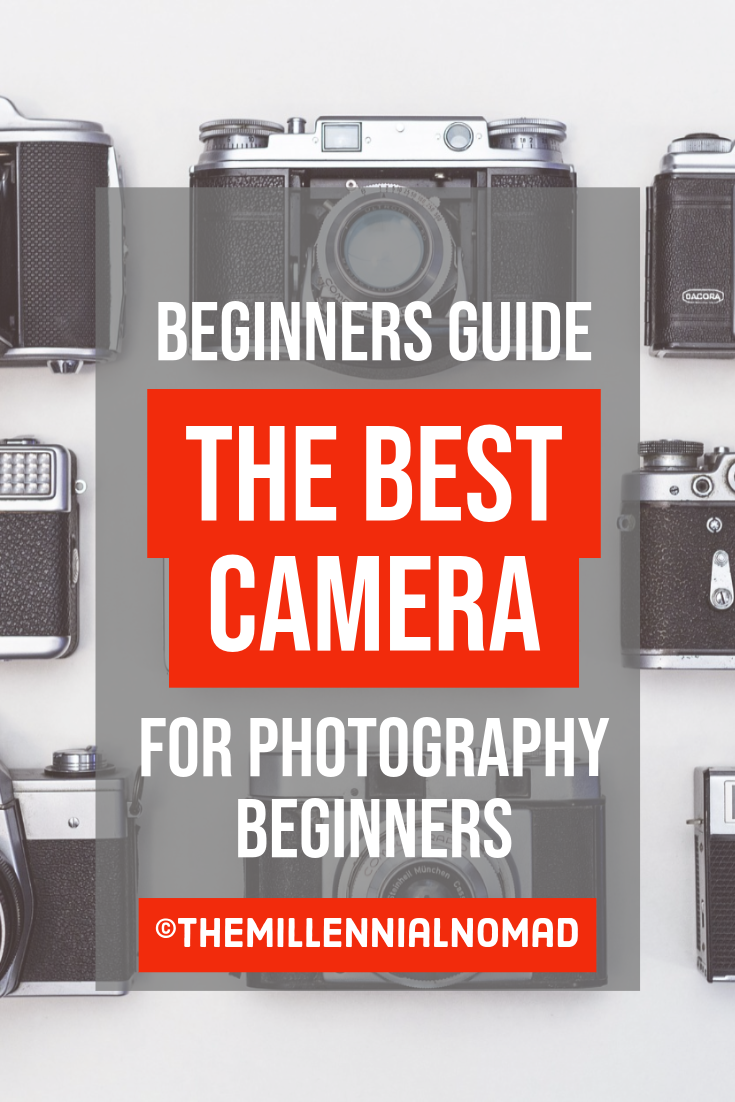Beginners Guide: The Best Camera For Photography Beginners
/This post contains affiliate link, meaning that I earn a commission on each sale at no extra costs for you. The commission received helps to support this website
Photography nowadays is democratised. Everyone owns a camera and take photos on daily basis to capture moments of their lives. Photography can be done from a wide range of devices, smartphones, action cameras, mirrorless cameras, DSLR cameras, bridge cameras, Polaroid etc…
The choice of devices has increased since the birth of digital photography. In this article I will focus mainly in comparing smartphone cameras with mirrorless /DSLR cameras as those devices are the one I use the most every day and can advise you on.
Following a recent poll in my photography Facebook group Focus and shoot. If you are not part of it, just click here to join. Most of you were interested in knowing what is the best camera to use for travel.
And my answer to you is: it depends!
It depends on the type of photographers you are. There are a few things to consider.
What type of camera to choose? What is your purpose of buying a camera? What is your budget? How are you planning on using your camera?
My goal with this article is to advise you on the best camera to buy for yourself by answering a few questions. By the end of this article, you should be able to make a rational decision on what type of cameras would be worth your investment.
What type of camera to choose?
DSLR or Digital Single Lens Reflex Cameras
They use the same design as the 35mm film cameras. A mirror inside the camera body reflects the light coming in through the lens up to additional mirrors and into the viewfinder so you can preview your shot. When pressing the shutter button, the mirror flips up, the shutter opens and the light hits the image sensor, which captures the final image.
Pros
fast auto-focus even though mirrorless cameras are getting better and better
Battery life
Cons
size
weight
Editing can only be done on Laptop and desktop or you will need additional accessories to be able to transfer your photos from your camera to a tablet or smartphone
Mirrorless cameras
In a mirrorless camera, light passes through the lens and right onto the image sensor, which captures a preview of the image to display on the rear screen. Most mirrorless cameras have interchangeable lenses that allow you to play around with different lens focal length and familiarise yourself with different style of photography
Pros
Compact
Light
Use WiFi or NFC to transfer your photos from your camera to a tablet or smartphone
Cons
Poor battery life
NB: Bare in mind that when choosing a camera, you should also consider the sensor size. I did not want to put it in the pros and cons because it depends on the type of photographers you are and your needs. If you’d like more information about sensor sizes and why they do matter when it comes to choosing the right camera for you, check out this article that breaks down very well everything you need to know.
Micro four thirds
Micro four thirds cameras are a great choice for amateur photographers. They offer a good balance between price, size, and excellent image quality, making them a popular choice for those starting out in photography. Their compact size makes them easy to transport, while their interchangeable four thirds lens system offers versatility and the ability to grow with the user's skill level.
Most micro four thirds cameras come with a standard kit lens, which is versatile enough for a range of photography styles. But one of the biggest benefits of these systems is the wide variety of lenses available. Users can choose from wide-angle, telephoto, macro, and more, allowing them to capture everything from sweeping landscapes to close-up details.
Another key benefit is the advanced features and settings. While they are user-friendly enough for beginners, micro four thirds cameras also offer a range of advanced features that can help users hone their skills. These include manual mode, customizable settings, and advanced autofocus systems. This means that as the user becomes more comfortable with the camera, they can start to explore these features, deepen their understanding of photography, and improve their technique.
In addition, these cameras typically come with decent video capabilities. This allows for hobbyists to experiment with videography, adding another dimension to their creative expression.
Additionally, micro four thirds cameras generally have excellent image stabilization. This can be particularly beneficial for those who enjoy shooting handheld, or when shooting in low light conditions where camera shake can impact the image quality.
In summary, micro four thirds cameras are affordable, portable, andoffer great image quality. They suit beginners looking for a good starting point, but also have plenty of scope for personal growth and development. Their wide variety of lenses and advanced features allow for creative flexibility, while their strong image stabilization minimizes the risk of blurry shots. Lastly, their video capabilities open up new avenues for creative exploration. Therefore, they are a worthwhile investment for any aspiring photographer.
What is your purpose of buying a camera?
Do you want to take landscape shots, do you want to take portraits. Do you see yourself carrying a lot of gear with you? Do you want to keep it a minimal setup? Do you see yourself building a career from photography in the long term or is it more a hobby?
I started photography just as a way to capture memories of moments in my life I wanted to remember. At that time using my smartphone was more than enough.
Then the more I learned about photography the more I saw the limits of using a smartphone and wanted to learn more photography techniques, hence the reason of buying a more advanced camera. At that time I chose the Sony a5000 because of how compact it is, for its interchangeable lenses and WiFi feature to transfer photos from my camera to my phone without any cables. Perfect when you are always on the go.
Then my Sony a5000 had a technical issue that wasn't fixable, so I decided to upgrade to the Sony a6300 that is my go to camera since 2017.
The Pros:
Compact
No cable needed to transfer photos to my phone or tablet
E-mount Interchangeable lenses
Shoot video up to 4K and up to 100fps, perfect for slow motion
Cons:
Not a full-frame camera, so be sure to apply the 1,5 multiplier to calculate your lens focal with the crop sensor. (i.e. a 50mm lens will be equal to a 50x1.5= 75mm full frame)
However, nowadays I tend to shoot more with my smartphone camera for day to day photos.
Why?
Because I always have it on me. It fits in my pocket and when used the right way you can get incredible results. This is something that I teach in my Dublin mobile photography workshop and also as an online course and all my students are amazed by the results they can get just with their phones.
All you need to know are a few photography techniques! You can get a copy of my FREE ebook here where I share with my 3 step approach to take beautiful photos.
I'd use my Sony camera for more advanced photography and for projects I'd take the time to plan in advance.
If you are interested in seeing my full list of gear you can see it here.
My wife on the other hand is a DSLR shooter. She is a wedding and portrait photographer and cannot see herself using any other cameras for her work.
However, I managed to convert her to mirrorless camera when traveling because of how compact and light they are. She uses the Canon M50.
I know that Fujifilm and Panasonic do great cameras with great in-camera image stabilisation for videos. But I would not be able to advise you on what would be the right fit for you.
Again it is all about the use you will make of your camera?
What is your budget?
Buying a camera is an investment. You do not only buy the camera body, but also the lenses, the accessories, the insurance, the lessons to learn constantly about photography, the software to edit your photos, etc...
That is why it is very easy for some people to fall into the GAS aka Gear Acquisition Syndrom!
Camera brands do a great work to promote their new products through influencers and will always put first the last technology and encourage you to buy because it makes your life as a photographer easier.
There are two schools when it comes to buying photography gear.
- either buy brand new if you have the budget
- or buy used cameras and accessories if you are on a budget
I started with brand new gears but now buy more used lenses. I haven't really upgraded my gear since 2017 to be honest. My wife on the other hand, only bought used cameras and lenses but she tends to upgrade every 2 years because of the use she makes of her camera. She takes way more photos than I do, at least a thousand photos per wedding!
So, you see, it really depends on the type of photographer you are, what type of photography you are going to make and what is your purpose of shooting photos. And finally, how much money you are ready to invest.
But you came to read this article to have some ideas of cameras to buy, so here is a list of recommendations by type of cameras without breaking the bank:
DSLR
Canon EOS 80D
This features a 24.2MP APS-C sized sensor, movable touchscreen, fast autofocus, a weather sealed body, and 7fps burst shooting capabilities.
Price: 1,049£
24.2MP sensor with 6 frames per second shooting, a moveable LCD touchscreen, and Bluetooth and WiFi connectivity.
Price: 700£
Mirrorless cameras
Sony a6300
24.2MP, fast auto-focus, 4K movie, wireless/NFC connectivity, dust and moisture resistant.
Price: 705£
5 axis image stabilisation, wifi connectivity, small and light
Price: 529£
24.2MP, 4K video, Built-in Wi-Fi with Dynamic NFC , 7.4 fps with Servo AF Up to 10 fps with fixed AF
Price: 599£
Smartphones:
Huawei P40 pro
Great performance in low-light. Manual mode accessible directly in the camera app to allow long exposure shots and be more in control of your photos. Plus with the new Huawei P30 Pro, the price is cheaper.
Price: 896£
Great performance in low light conditions. Great stabilisation for videos. Cheaper than Pixel 3.
Price: 420£
The iPhone 8 Plus has two lenses, a wide angle and a telephoto. Perfect to fit every life situation. And it also cheaper than the the X series.
Price: 699£
The Apple iPhone SE shoots very natural-looking photos. The dynamic range and the contrast are superb, the colors are simply spot-on, and noise is non-existent.
For a $400 phone, the iPhone SE shoots excellent daylight photos. The low-light performance has improved since the iPhone 8 by a lot even if the same camera takes the images.
Price: 400€
But I’d like to emphasise that the gear does not matter. What matters is your know-how and how you use it to create content.
What type of cameras do professional photographers use
Professional photographers often opt for DSLR or mirrorless cameras due to their image quality, speed, and adaptability.
Renowned brands such as Canon, Nikon, and Sony dominate this sphere, offering a range of models to suit various needs. These cameras provide manual controls, excellent low-light performance, and high-quality lenses.
Nonetheless, the choice of a camera ultimately depends on the specific requirements of the photography genre. For example, sports photographers might prioritize speed, while landscape photographers may focus on image quality and dynamic range.
Event photographers, on the other hand, often look for cameras with excellent low-light performance and fast autofocus.
Macro photographers might opt for cameras with advanced focusing features and a high level of detail capture.
Street photographers often prefer compact, unobtrusive cameras with quiet shutters. In addition, wildlife photographers typically require a robust camera with a high-quality zoom lens, fast autofocus, and high ISO capabilities.
Portrait photographers usually gravitate towards cameras that can produce shallow depth of field and have excellent color reproduction.
Ultimately, the best professional camera will be the one that aligns most closely with the photographer's specific needs and style.
Similarly, astrophotographers require cameras with outstanding low-light performance and high dynamic range.
Fashion photographers often choose cameras with high-resolution sensors, continuous shooting speed and excellent color accuracy. Additionally, travel photographers demand a camera that is both robust and lightweight, with a versatile lens range.
Architectural photographers might select cameras with tilt-shift capabilities or those that can create high-resolution composite images.
Finally, documentarians and photojournalists need reliable, versatile cameras that can quickly adapt to changing conditions. So, as we can see, the perfect camera for a professional photographer is often as unique as the style of photography they practice.
Must have functions for any amateur camera
The choice of camera might be influenced by factors such as ease of use, portability, and price.
Entry-level DSLR or mirrorless cameras from Canon, Nikon, and Sony can be excellent choices due to their image quality and versatility.
At the same time, advanced compact cameras like those from Fujifilm or Panasonic can offer a great balance between size, features, and performance.
Many of these cameras come with user-friendly automatic modes, but also offer plenty of manual controls for those wanting to learn and advance their photography skills.
Smartphone cameras, with their improving capabilities and the convenience they offer, also have a significant role in amateur photography.
Regardless of the camera type, it's always recommended for amateur photographers to understand the basics of photography, such as aperture, shutter speed, and ISO, as well as composition techniques.
This knowledge will enable you to get the most out of your chosen camera and develop your own style.
When selecting a camera, amateurs photographers should also consider the type of photography they are interested in.
For instance, those keen on landscape photography should look for cameras with good dynamic range and color accuracy, while those interested in street photography might value portability and quietness.
Similarly, would-be wildlife photographers should consider cameras with a good zoom range, while portrait enthusiasts might want a camera capable of producing a pleasing bokeh effect.
Finally, no matter what type of camera an amateur photographer chooses, you can greatly improve their skills through practice, experimentation,and by seeking constructive feedback.
Photography forums and social media platforms can be valuable resources for learning and improving technique.
It can also be beneficial to study the work of other photographers to gain inspiration and insight. Participating in photography workshops or courses can provide structured learning and hands-on experience.
Most importantly, the best camera for any photographer, professional or amateur, is the one that they feel comfortable using and that inspires them to capture their unique perspective of the world.
I hope that you found this article helpful and that you now have a better idea or even more insights to help you make your decision. What I forgot to mention is that you can also borrow cameras from your friends or family members and practice before getting yours and see what brand you feel the most comfortable with. That is another option before buying.
If you know anyone who need help to buy a new camera, feel free to share this post with them. And if you need some advice on taking better photos, do not hesitate to grab your FREE copy of my ebook via this link.































